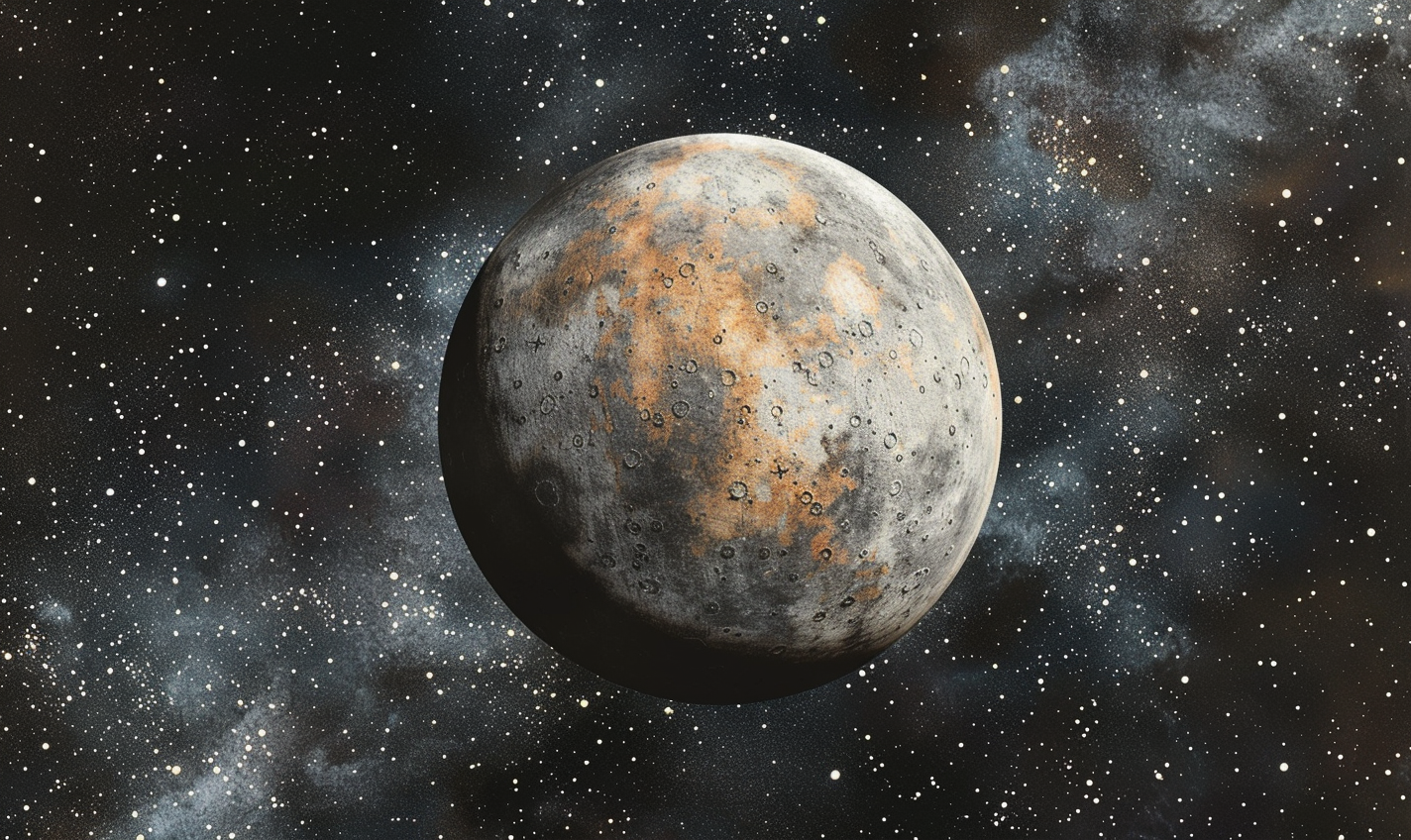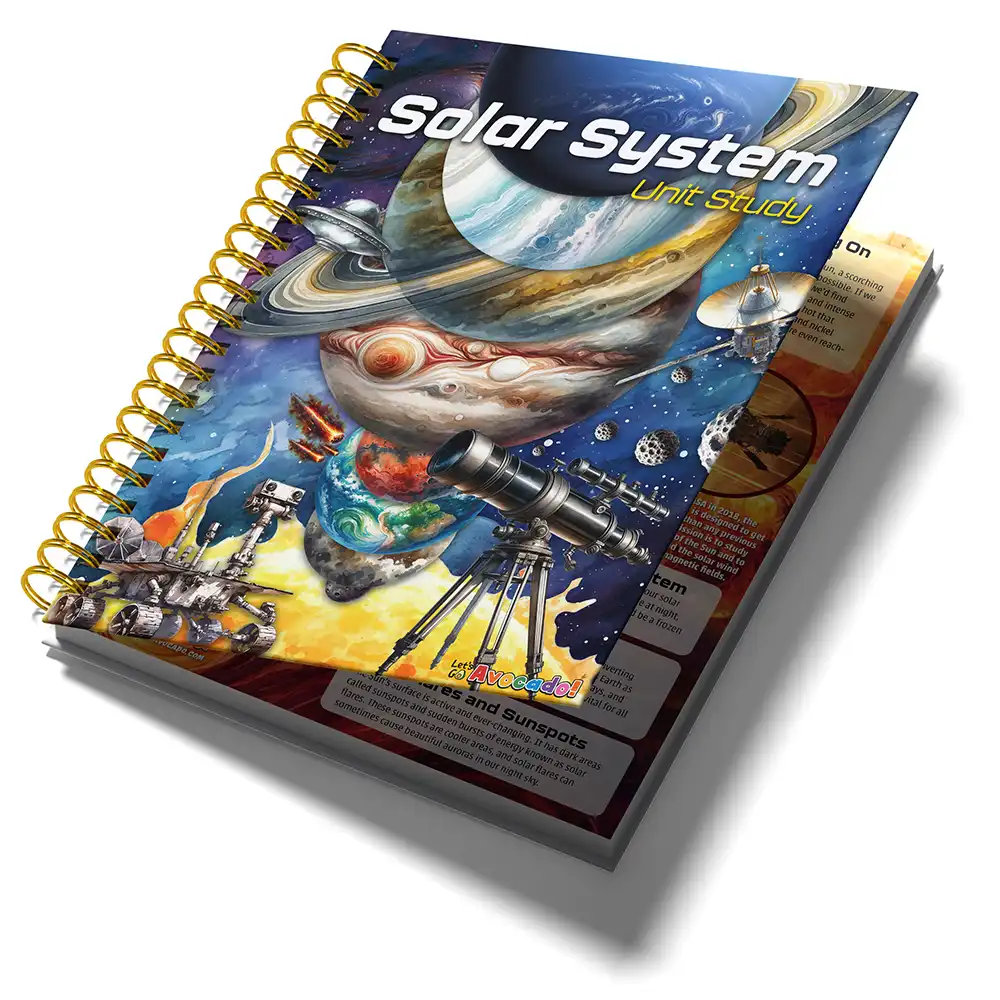This page may contain affiliate links.
Read our disclosure and privacy policy here.
One of the most fascinating facts about planet Mercury is its speedy orbit around the Sun. It completes a full lap in just 88 Earth days, marking the shortest year in our solar system. This fact alone sets Mercury apart as a celestial speedster, offering a unique perspective on planetary movement and solar influence. But there’s a lot more!
Table of Contents
Cool Facts About Planet Mercury
A Mighty Miniature World
The Structure Of Planet Mercury
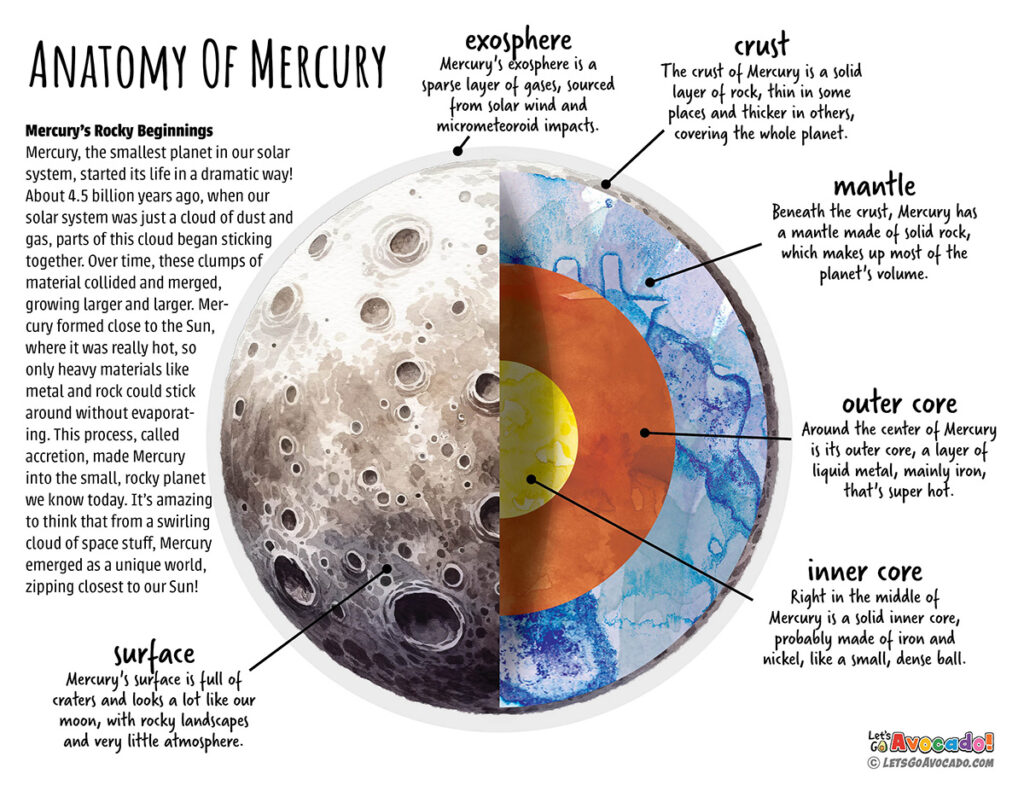
This anatomy poster is available in our Solar System Study Unit. Check our downloads section for more details.
The Crust: Mercury’s Protective Shell
Mercury’s crust is the outermost layer, much like the surface of the Earth but without water or life. It’s made of solid rock and is home to a vast number of craters from impacts with asteroids and comets over billions of years. This layer shows us the battle scars of Mercury’s history in space, making it a fascinating subject for scientists.
The Mantle: Beneath the Surface
Directly under the crust is the mantle, a thick layer that makes up most of Mercury’s volume. While we haven’t been able to directly observe this layer, measurements of Mercury’s gravity and the way it spins in space give clues to its existence. The mantle is thought to be made of dense rock that was once hot enough to flow slowly over geological time.
The Core: The Heart of Mercury
Mercury’s core is a dense, metallic center, occupying a larger proportion of the planet’s total size compared to Earth. It’s primarily made of iron and nickel and is divided into two parts: a solid inner core and a liquid outer core. The movement of the liquid part is what gives Mercury its magnetic field, albeit much weaker than Earth’s. This core is essential in understanding not just Mercury but the formation of planetary bodies across the solar system.
The Exosphere: Mercury’s Thin Atmosphere
Unlike Earth, Mercury doesn’t have a thick atmosphere. Instead, it has an exosphere, which is an extremely thin layer of gases captured from the Sun and atoms kicked up from the surface. This layer is so sparse that atoms in it rarely collide, making it an environment where individual atoms escape into space easily. Despite its thinness, the exosphere plays a crucial role in protecting Mercury’s surface from solar radiation and tiny meteoroids.
A Land of Extremes
The Storyteller's Surface
Solitude in Orbit
A unique fact about planet Mercury is its lack of moons. This solitude in its orbit around the Sun is attributed to its proximity to the solar giant, which would likely disrupt the orbit of any potential moons. Mercury’s singular journey through space adds to the mystique and allure of this small, yet significant, planet.
Unlocking Mercury's Mysteries
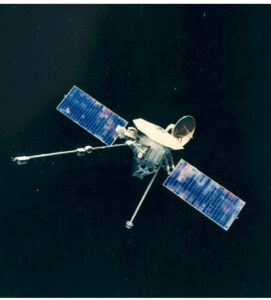
Mariner 10 , launched in 1973, was the first spacecraft to explore Mercury.
The quest to uncover facts about planet Mercury has led to several missions, including Mariner 10 and MESSENGER. These spacecraft have provided invaluable data on Mercury’s magnetic field, surface composition, and atmospheric conditions. The upcoming BepiColombo mission aims to further explore these aspects, highlighting the ongoing human endeavor to understand this enigmatic planet.
Why Mercury Matters
The Sun in Cultural Mythologies and Folklore
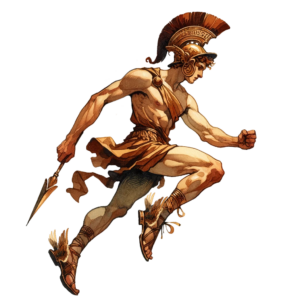
The planet Mercury was named after the Roman god Mercury, the messenger of the gods. The god Mercury was also known as Hermes in Greek mythology.
Fun Facts About Planet Mercury
- Mercury is Super Speedy: Mercury zooms around the Sun faster than any other planet in our solar system. It takes just 88 Earth days to complete one orbit. Imagine having your birthday every three months!
- A Day Longer Than a Year?: On Mercury, one day (the time it takes for Mercury to rotate once) is longer than its year. It takes 59 Earth days for Mercury to turn once, but only 88 days to orbit the Sun. That means you’d have less than two full days in a Mercurian year!
- Ice in the Heat: Even though Mercury is the closest planet to the Sun and can get extremely hot, there’s actually ice on its surface! This ice is found in craters at the poles where the Sun’s rays never reach. Pretty cool, right?
- No Air to Breathe: Mercury doesn’t have an atmosphere like Earth, which means there’s virtually no air to breathe. It does have a very thin “exosphere,” but it’s made up of atoms blasted off its surface by the Sun and space impacts, not the kind of air we can breathe.
- The Smallest Planet: Mercury is the smallest planet in our solar system now that Pluto is classified as a dwarf planet. It’s so small that you could fit more than 18 Mercurys inside Earth!
FAQ: 10 Cool Facts About the planet Mercury
- What makes Mercury the fastest planet in the solar system?
Mercury is the fastest planet because it’s the closest to the Sun, completing its orbit in just 88 Earth days. - Can you stand on Mercury like on Earth?
Standing on Mercury would be tricky! It has a solid surface like Earth, but with no air to breathe and extreme temperatures, it wouldn’t be a pleasant visit. - Why does Mercury have such long days and short years?
Mercury’s long days happen because it rotates slowly on its axis, taking 59 Earth days to complete one rotation, but it zooms around the Sun quickly, making its year just 88 Earth days long. - Is Mercury the hottest planet since it’s closest to the Sun?
Surprisingly, no! Venus holds the title for the hottest planet due to its thick atmosphere trapping heat, despite Mercury’s close orbit to the Sun. - Does Mercury have any moons or rings?
No, Mercury doesn’t have any moons or rings. Its close proximity to the Sun and small gravitational pull make it difficult to hold onto any. - What is Mercury made of?
Mercury has a large iron core surrounded by a rocky mantle and crust, making it very dense. - Can we live on Mercury?
Living on Mercury would be extremely challenging due to its lack of water, air, and extreme temperature fluctuations. - Are there any missions planned to explore Mercury?
Yes, the BepiColombo mission, a joint venture between the European Space Agency and Japan Aerospace Exploration Agency, is currently en route to study Mercury in detail. - Why is it called Mercury?
Mercury is named after the Roman messenger god because it moves across the sky so quickly. - What’s the coolest thing about Mercury?
One of the coolest things is that there’s ice on Mercury! Despite being so close to the Sun, there are permanently shadowed craters at its poles where ice can exist.
References
For those eager to dive deeper into the facts about planet Mercury, here are some highly recommended resources that offer a wealth of engaging and educational content:
NASA Space Place (spaceplace.nasa.gov): This site offers kid-friendly information on a wide range of space topics, including planets like Mercury. It’s designed to be engaging and educational, with easy-to-understand explanations and interactive elements.
National Geographic Kids (kids.nationalgeographic.com): National Geographic Kids provides a wealth of information on various subjects, including space. The site features articles, photos, and videos that are both educational and entertaining.
The Planetary Society (planetary.org): The Planetary Society’s website offers in-depth articles and updates on space exploration, including missions to Mercury. While it’s more detailed, it’s a great resource for older kids or those with a deeper interest in space.
These resources are perfect for expanding your knowledge and are sure to spark further curiosity and learning.

There’s a lot to explore right where we are, in our own neighborhoods and backyards! Join us while we get off the couch and explore the everyday wonders of nature, science, space, engineering, art, and anything else we stumble upon during on our adventures.


